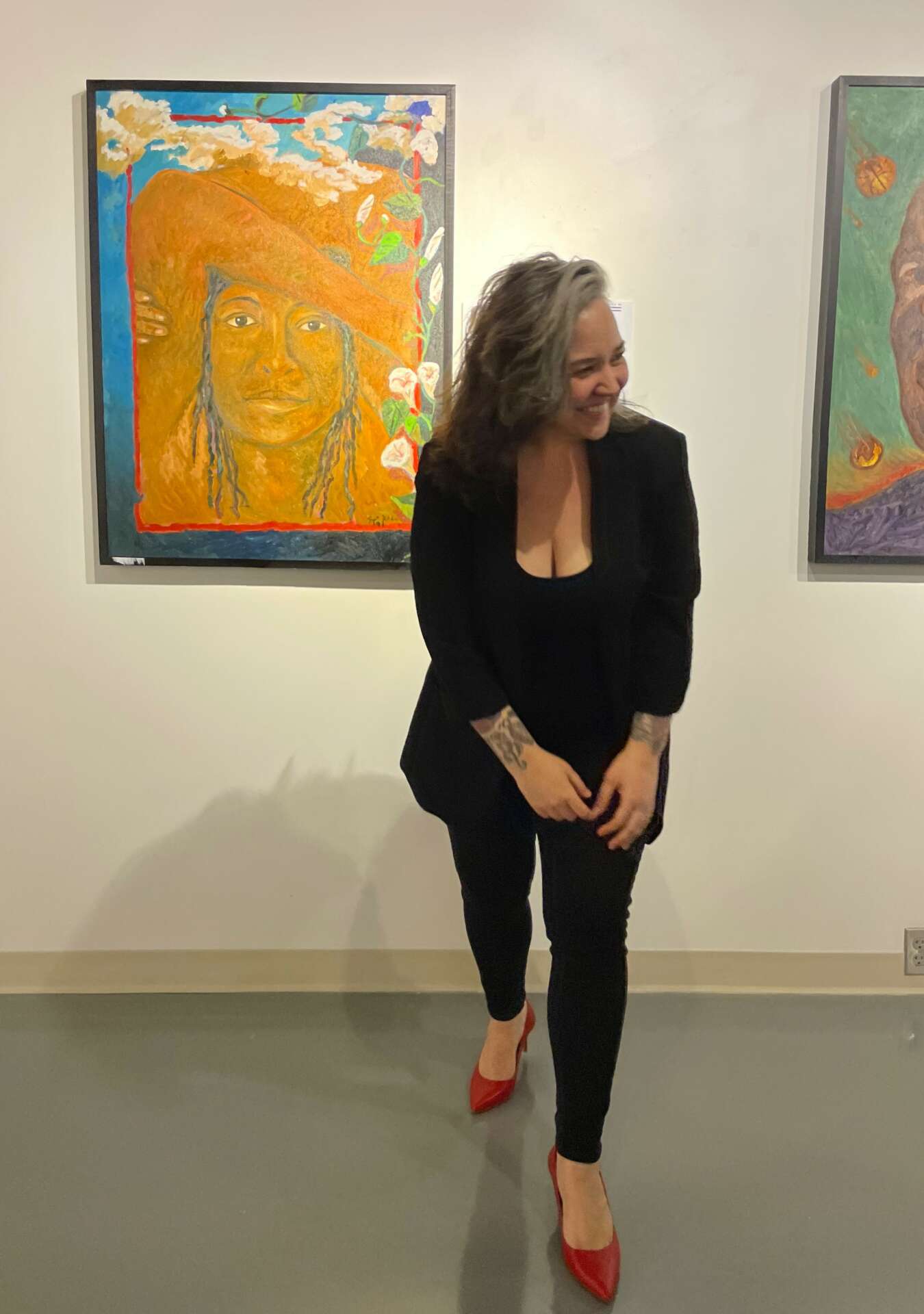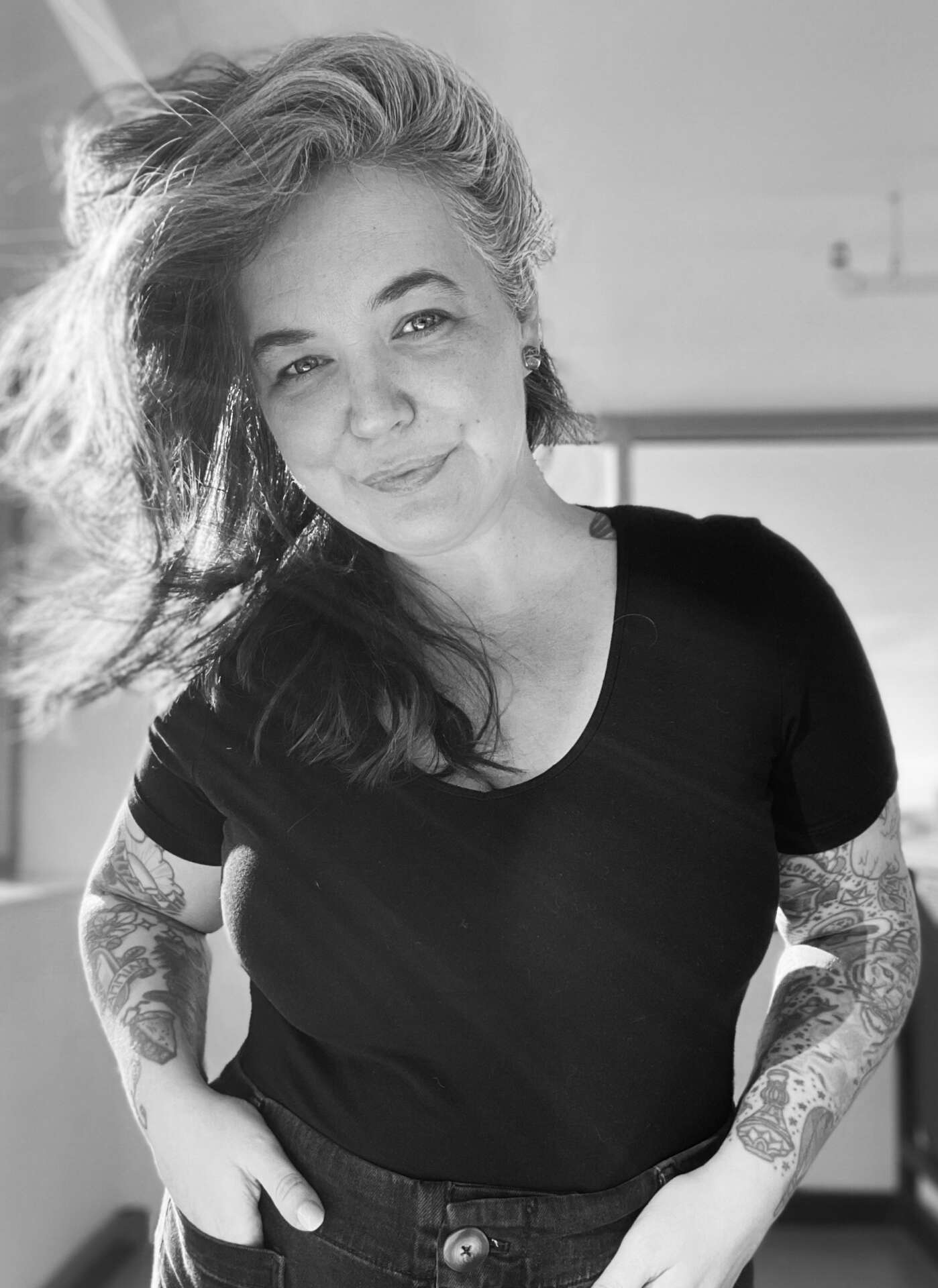Alright – so today we’ve got the honor of introducing you to Erin Cross. We think you’ll enjoy our conversation, we’ve shared it below.
Hi Erin , thanks for joining us today. Can you talk to us about how you learned to do what you do?
I took a fairly traditional educational route. I went to college and eventually majored in Art. It was the natural path and I always knew I would pursue the creative field in one way or another. I went straight into graduate school after I graduated with my BFA. In hindsight, I wasn’t quite ready for the “level-up” experience. I was young minded and could have benefited with waiting by traveling and experiencing life as a creative with the untested skills I had already obtained as a young studio art student. At the time, there was a push to go to graduate school, an unnecessary sense of urgency.
When you’re in graduate school, everything runs at 1000% all the time. You focus on one concept for three years, fighting and defending yourself 24/7. I usually felt lost and I lacked the mentorship I craved for. Now, when I have one of my own student’s preparing their graduate school application and portfolio, I take time to discuss the pros and cons, the realities vs. expectations. It’s absolutely an exciting time but it’s also a period for asking serious questions, reflecting and growing. Not everyone is prepared for that right out of their undergraduate programs.
In many ways, my learning process could have benefited from a break in education. The mix of success and failure outside of the safety net I felt when attending university hit differently in the “real” world scenerio. You definitely learn to think outside the box and lean into more conceptual approaches in graduate school. The concepts that propelled more critical thinking towards art and life have been some of the more essential skills gained during that time. Ultimately, allowing me to respond to trouble shooting and self management in a more academic and therefore systematic way. On the flip side of that, it took some maturing as a professional to be able to combine structure and organic in any meaningful way.
I rarely regret my choices though, everyone’s life path ebbs and flows and graduate school did have a positive influence on me in many ways. It was during this time I realized how much I enjoyed learning about the inner working of the artistic process, curating and storytelling.


As always, we appreciate you sharing your insights and we’ve got a few more questions for you, but before we get to all of that can you take a minute to introduce yourself and give our readers some of your back background and context?
I hold a MFA in Visual Studies from Norfolk State University and have over 15 years experience in the educational and professional field of studio art. I am an educator to my core and believe art is for everyone. Whether I am conducting an art “how to” workshop or exploring curated art collections, my goal is to create a community where art is a catalyst for discovery.
I am a teacher-mentor who models strategies to find successful outcomes through the creative development process. I emphasis creative purpose through intentionality and cultivating platforms, like the gallery/museum environment to bridge unique perspective while having an awareness of how to communicate effectively in society.
During COVID, I started the YouTube Channel: Guidance For Creatives. It is a platform to continue engaging with my current students while also provide access to anyone who wants to learn. This includes art concepts, skills and techniques and art history focusing on individual artists and small curated virtual exhibitions. The videos are simple but there is a lot of content in each one.
I truly have a passion for cultivating safe spaces for learning, especially in the gallery format. Most recently, I have been focusing on the art gallery as an active learning engagement tool. My professional research and daily practice include traditional and innovative ways on how to present object-based study and merge the investigation and continuous experience in making and learning of various art disciplines. I creatively and conceptually connect the lesson/assignment with a clearly defined outcome that is appealing to students and community members.
Failure is never a desired outcome for a student or professional but I when I teach and present, my focus is to get the creative learner to see the concept of “failure” as more of an opportunity for experimentation. If a process and/or technique is to be developed, risk and pushing boundaries are important. Without risk and the potential for failure, development becomes stagnant and wasted. There is a potential for broader context too in understanding that success can also be a potential for failure. That’s what we are learning everyday as humans, how to observe and respond to world. Sometimes that response requires the effort and skill behind a technical activity like drawing or questioning the out of date art historical canon. Sometimes it’s about taking a risk and letting go of the old expectations of self that encourages a vulnerable state of learning through self-reflection and learning to respond to citizenship and justice.


How about pivoting – can you share the story of a time you’ve had to pivot?
Before COVID, there was this push against virtual learning in the higher ed studio art environment. Many thought that it couldn’t be done and there were a lot of meltdowns when everything shutdown. Switching platforms and creating new lessons based on virtual learning with the stress of a global pandemic was a monumental task for educators . A lot of folks walked away and I think that was okay. It many ways, it was brave to say no and listen to yourself and your needs. For me, I actually enjoyed the challenge and I found the shake up good for my pedagogy. Switching to virtual learning, even temporarily, forced me to rethink how inclusive and accessible my lessons and assignments actually were. I became more aware of the different learning needs and approaches for the creatives taking my classes. Even the art gallery needed to change to stay relevant as a learning and engagement platform. This is when I began my YouTube channel and began presenting my lessons and curated gallery exhibitions virtually. Even though I am back in the traditional classroom and gallery format, I make sure I am still incorporating some virtual element.
What can society do to ensure an environment that’s helpful to artists and creatives?
Humans aren’t meant to do life alone. Community is important. I think we could use more public safe spaces where creatives can commune and dream together. Its really easy for creatives to become isolated. I think COVID was a catalyst for bringing kind of need into awareness.. As we resume a new normal in the post-COVID world, shared free spaces that cultivate creative expression are in need. While such environments do exist in city areas, the smaller cities, town and rural communities still lack.
Contact Info:
- Website: www.erinmcross.com
- Instagram: erincross
- Linkedin: linkedin.com/in/erin-cross-9643461b4
- Youtube: https://www.youtube.com/@guidanceforcreatives5042
Image Credits
SavingPNG 3.png image: painting behind me is by artist and educator, Gilbert Fletcher in Rall Gallery savingPNG.jpeg image: me teaching portrait painting to Intro to Painting students Erin Cross Video Stills image: from an instructional drawing video


